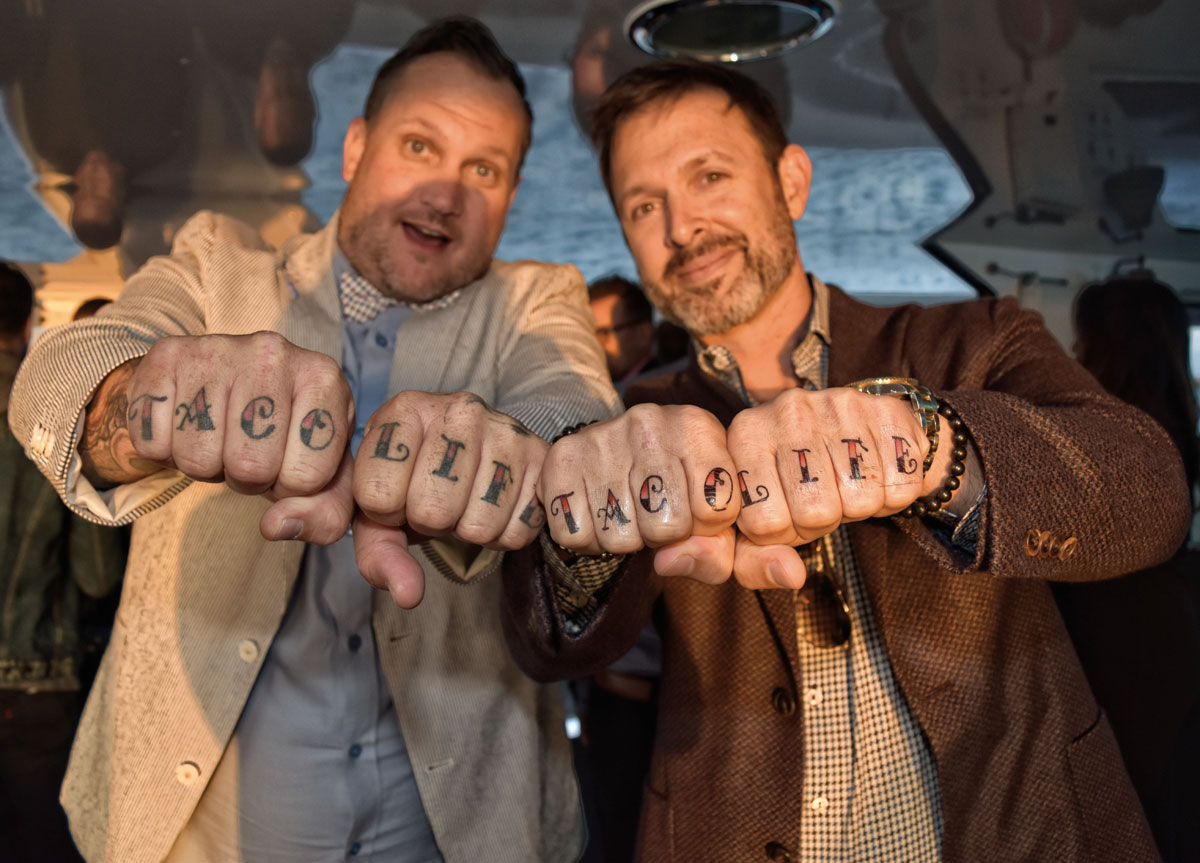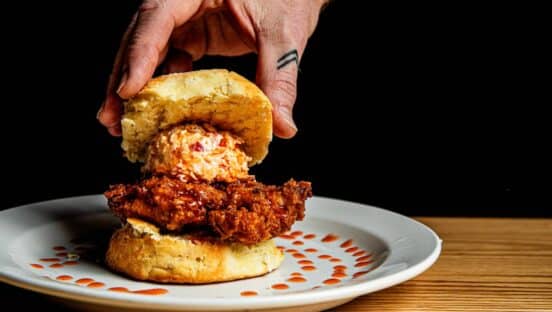It all started in 2002 in Newport Beach, California. Locals Randy Wyner and Dan Biello had grown up eating at taquerias and wanted to create a restaurant that was less divey, the kind of place people could hang. They imagined a concept that was customizable, especially since “[Wyner] was a bit of a picky eater,” says Michael Mohammed, CEO and president.
As soon as Wyner and Biello set up shop, customers flocked for the good vibes and game-changing food, like the 13-inch “monster” burritos and tacos al pastor.
The duo opened a second location in Huntington Beach, and by 2006 they were franchising, ultimately opening around 30 locations. But burnout eventually led them to sell the company to partners.
In 2011, Wyner realized his mistake, believing the company had lost its way. He met with Mohammed, a franchisee financier from Canada he’d stayed in touch with, and the two started to talk about buying back the business.
Mohammed discusses that acquisition, getting the brand on track, and his hopes for the future.
Smoothing out the kinks
I met Randy in 2010, when they were expanding Chronic Tacos in Canada. I started talking about the brand and the business and just hit it off. I stayed in touch and would tell him about where I thought there were weak spots under current leadership from a business point of view.
In 2012, we acquired majority control of the company and began to analyze the weaknesses of the enterprise and put together a plan to turn that around.
There’s always more to it than you plan for, things we didn’t see during due diligence, like inconsistencies among the restaurants. There were no clear systems; the branding was all over the place. You could go from one location to another, and you didn’t feel like you were in the same restaurant. Ultimately, there was no solid foundation. So we pulled back, saying we’re not going to franchise anymore. We need to fix this model. We began exiting all the restaurants we didn’t feel were going to be able to fit our model.
As with a lot of companies in their early stages, the founders had everything in their heads. They’d go out and train, but there was no system in place, so the franchised restaurants started taking on their own life and culture.
Readying for relaunch
We needed to create a platform for growth. The first thing we did was take a look at branding and start to fine-tune it, get it real concise. We wanted to refocus on the authenticity of this cool, edgy brand. We started to bring in a lot of Day of the Dead art, hiring a street graffiti artist to create a unique feel.
We stopped selling franchises for two-and-a-half years. We opened three to four corporate stores during that time, just really homing in on the equipment and design elements that we wanted. We were at 26 restaurants; my goal was to say we’re going to be over 100, so let’s get these systems in place now.
We made that investment early in creating our manuals, training program, design guidelines, branding guidelines, and marketing elements. We really needed to systemize our operation and build our team. In 2014, we started to build our strategy around franchising—what we were looking for in a business partner and where we thought we would like to expand.
Set for success
We began to franchise again in 2015. Since then, we’ve grown from 26 to 54 and have now expanded into Japan—we’ll be opening two more there this year. Our goal was to be at 100 by next year; we’ll be shy of that, but pretty close. We always look at that 300–500 units as our goal.
Our most important factor is our franchisees. We get approached by franchisees, and our first thing to determine—before we even look at a location—is whether we see eye to eye with them on the culture. This is a family and a partnership. It’s got to be a good fit. That doesn’t mean that you’re not going to challenge each other, but, at the end of the day, you’re going to have the same vision for the culture and the brand.
There are a lot of factors that go into determining if the area is a good area. If a location is not in an area close to where we’re already expanding or if we can’t logistically get the food quality that we want there, we won’t choose to grow there. We also have an analytic software to help evaluate sites.
Restaurants are an exciting business no matter how you cut it. It can be a challenging, but having passion for the brand and what we do ultimately grows our success.




